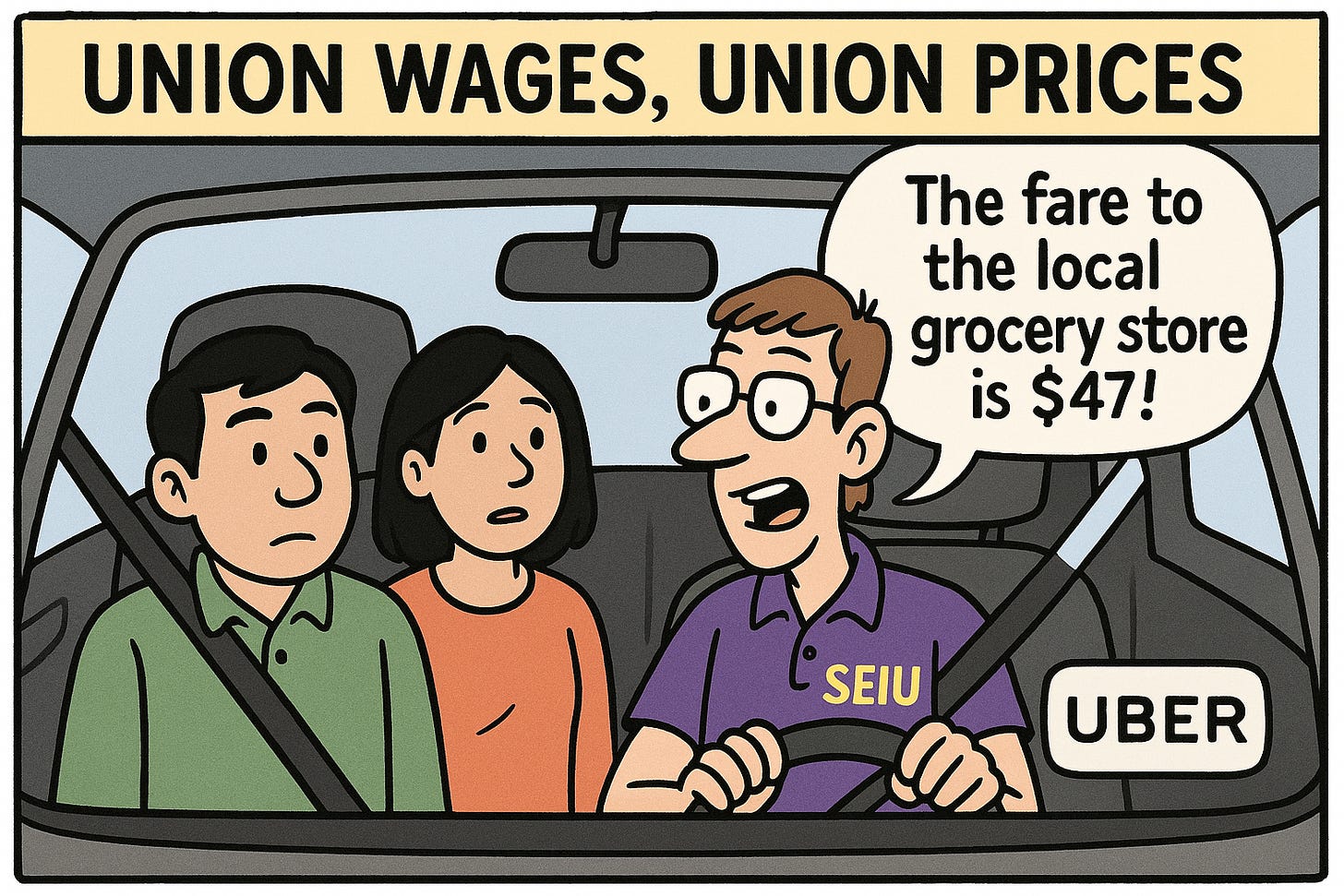Sacramento’s Rideshare Ruse: Power Grab Disguised as Progress
Newsom and Democrats used the threat of ongoing overregulation and new harmful legislation to bully Uber and Lyft into a deal that’s bad news for consumers.
⏱️ 4 minute read
How Newsom’s Deal Threatens Your Wallet
Imagine this: You’re standing on a busy street corner after a long day, pulling out your phone to hail an Uber or Lyft. The app loads, you punch in your destination, and—bam—the fare pops up at double what you’re used to paying. It’s not surge pricing from rush hour; it’s the new normal. You stare at the screen, weigh your options, and end up walking or squeezing onto overcrowded public transit instead. This isn’t some distant dystopia—it’s a very real scenario barreling toward California riders, courtesy of a recent “deal” struck in Sacramento.
Newsom and Democrats used the threat of ongoing overregulation and new harmful legislation to bully Uber and Lyft into a deal that’s bad news for consumers.
Read on to see how government meddling could turn affordable rides into a luxury few can swing….
This afternoon column is mostly behind our paywall, with the content being for our paid subscribers. The great news is that subscribing is really economic, and a great value. It’s $7 a month or $70 a year. Far below what other similar newsletters charge, and this gives you access to 100% of our content (free subscribers get about 60%). Sign up now and read on…
The Rest Of The Story…
As detailed in the Los Angeles Times, this agreement pairs a union-backed collective bargaining bill with one supported by the rideshare companies to slash their insurance requirements. It’s being sold as a win for drivers and riders alike—stronger worker voices, lower fares. But look past the spin, and this looks less like a compromise and more like a strong-arm tactic to expand union influence while passing the costs to everyday Californians.
This isn’t just a one-off thing. It’s a calculated step in a broader push to put politics first, at the expense of free markets and keeping things affordable.
AB5: The Opening Salvo in Worker Reclassification
The roots of this deal trace back to 2019, when California passed Assembly Bill 5 (AB5). This law tightened the rules for classifying workers as independent contractors, adopting the “ABC test” to force many into employee status with benefits and union eligibility. Gig companies like Uber and Lyft pushed back, securing voter approval for Proposition 22 in 2020. Prop 22 exempted rideshare drivers from AB5, preserving their contractor status while offering benefits like minimum pay and health stipends.
But the state’s labor allies didn’t relent. The new collective bargaining bill, led by Assemblymembers Buffy Wicks and Marc Berman and backed by the Service Employees International Union, is their latest maneuver. It allows drivers to negotiate pay and terms as contractors, bypassing federal antitrust laws through state oversight. This isn’t about empowering drivers—it’s about pushing them into unions, continuing the mission AB5 started.
A Deal with a Catch: Insurance as Leverage
The other half of this bargain involves reducing insurance mandates. Currently, rideshare companies must carry $1 million per driver for accidents involving uninsured motorists, a requirement far exceeding those for taxis or buses. This drives up fares—insurance accounts for 32% of Uber’s costs in California, 45% in Los Angeles County. The new bill, introduced by Senator Christopher Cabaldon, cuts this to $60,000 per driver and $300,000 per accident.
Sounds reasonable, right? But here’s the rub: Uber and Lyft initially opposed the unionization bill. To get them on board, lawmakers dangled the insurance relief as bait, backed by the threat of more punitive regulations. This wasn’t a negotiation—it was a legislative shakedown. Newsom’s claim that “labor and industry” found “common ground” ignores the arm-twisting to make them agree. With Democrats dominating Sacramento and unions calling shots, the companies faced a stark choice: agree or face worse regulations later.
This tactic undermines the free-market principles that made ridesharing thrive. It’s not about fairness—it’s about using state power to tilt the scales.
The Real Cost: Higher Fares, Less Freedom
Proponents insist this deal will keep rides affordable while boosting driver rights. But history suggests otherwise. Unionization often brings higher wages, stricter work rules, and added costs—think union dues and extra red tape. These expenses don’t vanish; they’re passed to riders through pricier fares. In a state where rideshare costs are already bloated by regulation, this could make services like Uber and Lyft unaffordable for many.
Worse, not all drivers want this. Many chose gig work for its flexibility—set your hours, skip the bureaucracy. Shoving a union setup on them could turn off these drivers, shrink the pool of available ones, and mess with how easy it is to get a ride. Other states like Florida and Louisiana have cut insurance burdens without demanding concessions, showing California’s approach is less about reform and more about political favors.
So, Does It Matter?
This deal exposes a troubling pattern: government using its clout to remake industries for a few special interests. By focusing on growing unions instead of keeping things affordable and giving people options, Sacramento risks turning ride sharing into another over-regulated, overpriced relic. Higher fares will hit working families hardest, while drivers may lose the independence they value. This isn’t progress—it’s a power grab dressed up as compassion. If we care about keeping markets free and services accessible, we need to push back on this stuff before it kills innovation and sticks consumers with even higher bills.
Tags: California policy, rideshare regulation, union influence, gig economy, AB5 impact, worker freedom, fiscal policy, government overreach, consumer costs, Proposition 22



